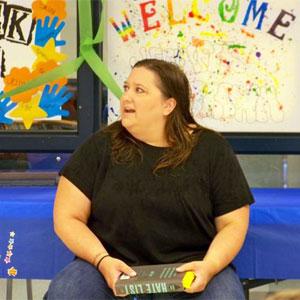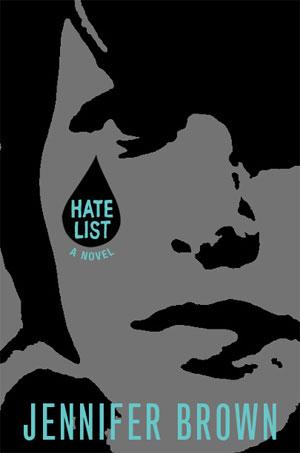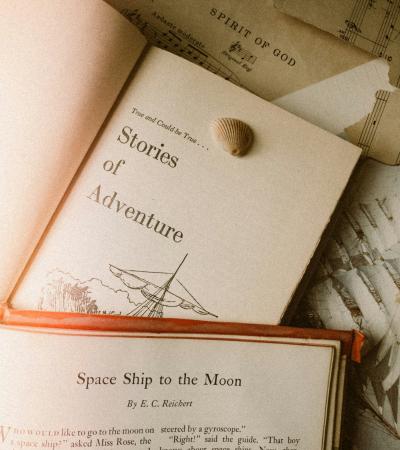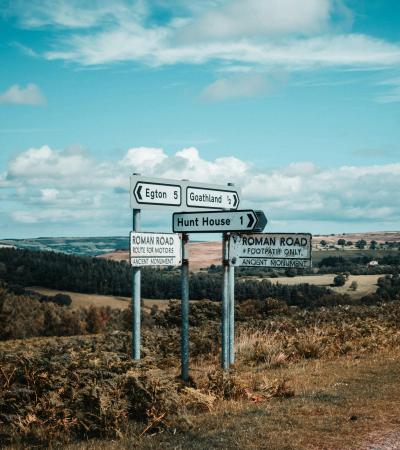A Week of Great Stories: Library Media Specialist Francie Clinton
Francie Clinton | April 27, 2012
Editor’s note: This is the first in a special, week-long series on library programming for underserved, troubled teen populations, written by authors and a librarian who participated in the Great Stories CLUB.
Last August, I learned that Hate List had been chosen for ALA’s Great Stories CLUB theme Second Chances. I was so thrilled about this, partly because the theme so perfectly fit what I believed the book to be about—healing and letting go of the past and moving forward into a bright future—but also because this program was going to be geared toward troubled teens.
This was a big deal to me, because being a voice for troubled teens was what I’d originally intended to do with my life. I have a degree in psychology, and throughout college, I wanted to work with troubled teens—whether in a rehab, a mental health facility, or a juvenile detention center, I didn’t care. I’d grown up regularly visiting a loved one in all of those places. I watched her struggle with feeling isolated from the outside world, and with being seen mostly as a set of behaviors or a diagnosis, her dreams and thoughts and ideas not much taken into consideration.
So how thrilled was I when I received an email from ALA asking if I’d be willing to visit two facilities that had taken part of the Great Stories CLUB grant! I was very excited to get to meet the teens who’d read my book, to hear their thoughts, and to reach out to them in the best way I know how—through writing.

I drove to Oklahoma on August 11; first stop: Yukon. I met up with librarian Carla Hickey, who whisked me away to visit the teens in Gary E. Miller Canadian County Childrens Justice Center. I could tell the moment we walked into the building that this was going to be a good group. The teens had been assembled in a common area, their chairs in horseshoe formation, with a chair for me right in the middle, so we could all easily see one another and communicate conversationally. They’d decorated the room with streamers and had pulled in a long table with cookies and punch for the group. It was a special day!
Right away, I launched into my story of being bullied and how I came to write Hate List. I had planned to talk with them about lots of things, from the inspiration behind the story to my journey to writing and even a little about story creation. But I could tell that these teens were prepared with questions, so instead of talking “at them,” I let their curiosity and thoughts be our guide. I told them we would interrupt for questions whenever they felt like asking, rather than saving questions for last. And it just happened that, through answering their questions, I was able to talk about all the things I’d planned to talk about anyway. I even had time to read some key passages from Hate List.
The students asked me tons of questions, from what authors I love to read most to what the tattoo around my wrist says. They gave me book recommendations, and leafed through the German and Chinese versions of Hate List. They were interested in when and how I decided to become a writer. This allowed me to talk to them a little about my own long and winding path to where I am now. How I made some poor decisions in my youth, and how those decisions took me down roads that were not at all where I wanted to be in life. How I made the decision to go back to school and renew my life. How I decided to try being published, and how I had to keep getting back up after being knocked down by rejections time and time and time again. I realized my story of my own journey fit very well into the Second Chances theme as well, and I hoped that I passed on to some of the students a feeling that, though it may not feel like it, they still have choices and chances ahead of them in life, and they can choose to make right choices and take those chances and end up in a really good place somewhere down the road.
A student asked me if I’d ever considered writing a story about addiction or rehab. This allowed me to open up a discussion about stories always being around you, and being a writer not being so much about “coming up with” new stories, but of recognizing the ones that are already there. We did a short exercise where I proved to them that they all had stories already inside their heads, and they just needed to be open to seeing those stories. This segued very naturally into a discussion about using the story they already know—the story of the life they’ve been through—to create fictional stories, just as I used my experience with bullying to create Hate List. In the end, I encouraged the girl who asked the question to consider writing her own story about addiction and rehabilitation, because it is a story she knows well.

After a brief book signing, Carla once again whisked me away, back to the Mabel C. Fry Public Library, for a quick Lunch with the Author event, where the library brought in pizza, salads, and soda, and a few patrons came in, asked questions, talked about books, and ate, and then I was off to my second destination, Tecumseh!
I arrived at the Tecumseh Public Library in mid-afternoon, and was taken to the Central Oklahoma Juvenile Center by librarian Susan Goldsberry. She informed me that she had a small group of girls who’d been reading Hate List and were excited to meet me. This was apparent as the social worker led us to our meeting room and a few of the girls began yelling to me from across the yard, waving and cheering.
Indeed it was a small group, and we had considerably less time to talk. Again, I talked about my inspiration behind the book and did a little reading to get us warmed up. But these girls had lots of questions, and we ended up talking about education, about my writing process, and about the nuts and bolts of being a writer. These girls seemed to be interested in the job of writing, wanting to know how much money a writer makes and how long it takes to write a book. They were enthusiastic and eager, and very excited to get their books signed at the end of our discussion. Susan passed out copies of the next book in the Great Stories CLUB series as I signed copies of mine, and I watched as the girls excitedly asked questions about the new book.
Overall, I came away from the experience knowing that the troubled teens being touched by the Great Stories CLUB are so appreciative of the time the librarians and authors are willing to give them. They are inquisitive and they care. They have aspirations and thoughts and big dreams that they hope will be lent some credence during these visits. Not many of them want to be writers, but almost all of them are willing readers. And their ideas and discussions will likely stick with me for a long, long time. Thank you, ALA!



